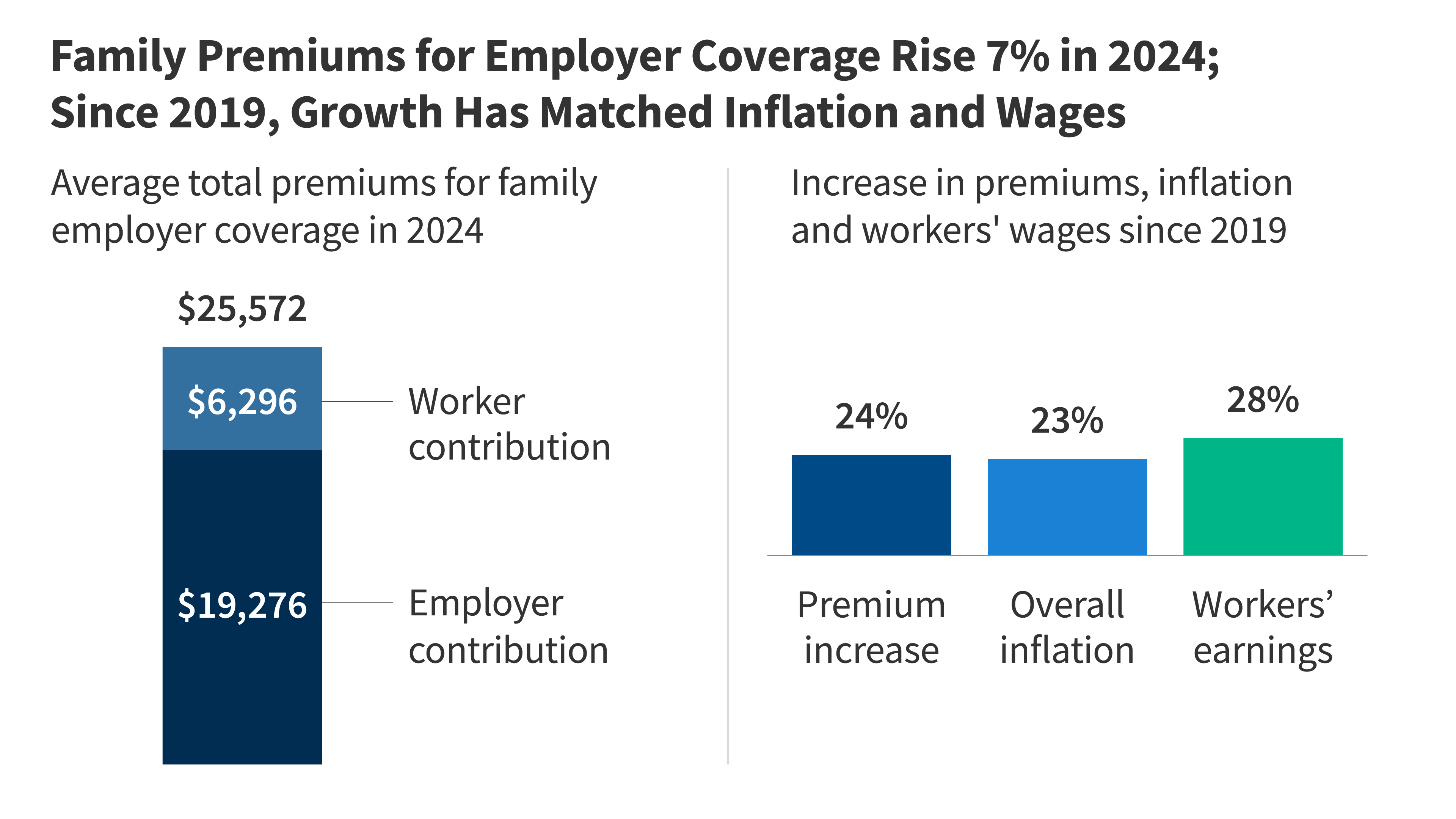In Health Care, Sometimes It’s Provider Choice vs. Price
Drew Altman, in The Wall Street Journal's Think Tank, examines the tradeoff between choice of doctors and hospitals and price when choosing a narrow network.
The independent source for health policy research, polling, and news.
KFF’s policy research provides facts and analysis on a wide range of policy issues and public programs.
KFF designs, conducts and analyzes original public opinion and survey research on Americans’ attitudes, knowledge, and experiences with the health care system to help amplify the public’s voice in major national debates.
KFF Health News is a national newsroom that produces in-depth journalism about health issues and is one of the organization’s core operating programs.
A new analysis of initial rate filings for Affordable Care Act (ACA) Marketplace plans submitted by 312 insurers in all 50 states and the District of Columbia finds the median proposed increase for 2026 is 18%, more than double last year’s 7% median proposed increase. The proposed rates are preliminary and could change before being finalized in late summer. In addition to rising cost and utilization of services, insurers cited the expiration of enhanced premium tax credits as a significant factor in their rate hikes for next year.







Choose which emails are best for you.
Sign up here
Drew Altman, in The Wall Street Journal's Think Tank, examines the tradeoff between choice of doctors and hospitals and price when choosing a narrow network.
Report & Briefing Examine How Seniors Choose Among Their Medicare Plan Options Seniors appreciate having a wide range of Medicare private plan choices available to them but often feel unqualified to choose among them, a new Kaiser Family Foundation report concludes.
This report summarizes first-hand accounts of seniors’ Medicare private plan decision making strategies, based on focus groups conducted in four cities. Seniors found the initial plan selection process overwhelming due to the volume of information they received and their inability to organize it. Few used the government's online comparison tool, and those that did cite several shortcomings. Many relied on advice from sources they trust, including insurance agents, plan representatives, friends, family members, doctor's offices and pharmacists. After they enroll in a plan, many seniors did not revisit their initial decision or review plan options without the strong provocation of a substantial increase in cost, change in coverage, or shift in personal health care needs. Moreover, they feared that a change in plans may disrupt their care, or lead to an unforeseen increase in out-of-pocket costs, and require them to learn new rules and requirements. They are doubtful they would end up in a plan that is appreciatively different or better for them. Overall, seniors preferred to have numerous choices in plans but would like personalized help and advice from experts to ease the process.
Drew Altman, in The Wall Street Journal‘s Think Tank, writes that the next big concern for the Affordable Care Act (ACA) will be how much premiums increase in exchanges for 2015. He discusses the factors to focus on to put this issue in perspective when states report premium increases.
A new Kaiser Family Foundation report examines the current role and future outlook of employer-sponsored retiree health benefits for pre-65 and Medicare-eligible retirees.
This analysis examines the amount of financial assistance that people have qualified for through premium tax credits in the new health insurance marketplaces (also known as exchanges) under the Affordable Care Act through the end of February 2014. The brief also examines the implications that the enrollment variation carries for the potential tax benefits the Affordable Care Act offers to state residents.
The March 2014 Visualizing Health Policy infographic shows examples of what Americans will pay for health insurance under the Affordable Care Act, using different scenarios for 40-year-old individuals living in different parts of the country. Visualizing Health Policy is a monthly infographic series produced in partnership with the Journal of the American Medical Association (JAMA).
What Americans Pay for Health Insurance Under the ACA, JAMA, March 18 2014 Download >>View Infographic…
This issue brief offers an early look into how competitive the health insurance exchanges (also called marketplaces) are under the Affordable Care Act in selected states. Through analysis of enrollment data released by seven states (California, Connecticut, Minnesota, New York, Nevada, Rhode Island, and Washington) this brief finds that exchange markets in California and New York are shaping up to be more competitive than their individual markets were in 2012 while those of Connecticut and Washington show less competition (less even market share distribution). In several states, market concentration of individual insurers have shifted significantly compared to the individual market prior to the ACA, pointing to the potential for greater price competition in the future and the influence of new entrants to the market.
On March 25th, the Supreme Court will hear two cases brought by for-profit corporations challenging the ACA’s contraceptive coverage rule on religious grounds. These two corporations are Hobby Lobby, a national chain of craft stores owned by a Christian family and Conestoga Wood Specialties, a cabinet manufacturer, owned by a Mennonite family. Beyond the impact on the ACA and contraceptive coverage, the Court’s decision may have implications for religious rights of employers and employees, as well as corporate and civil rights laws. This brief examines three fundamental questions raised by some of the 84 amicus briefs that have been submitted to the Court.
© 2025 KFF